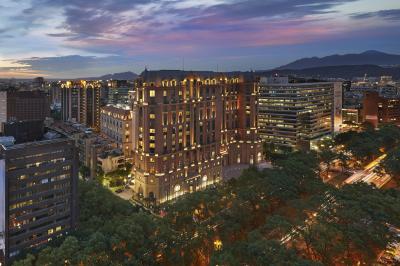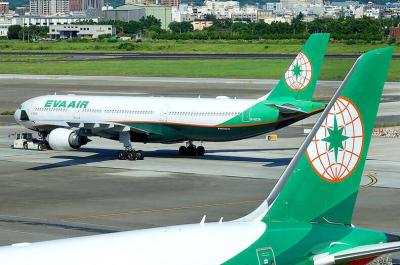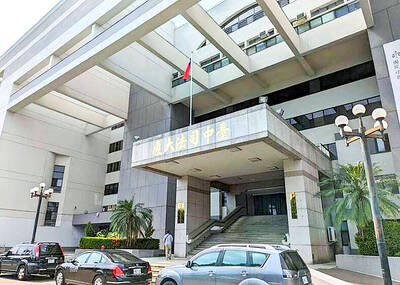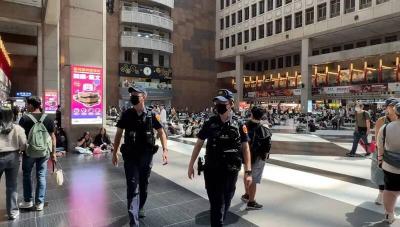Medical students urged the candidates in next year’s presidential election to unveil their plans and policy directions on medical care and welfare to improve an environment in which staff are often overworked.
Federation of Medical Students in Taiwan chairperson Hsu Jui-chi (許睿琪) told a press conference at the legislature that medical practitioners operated in poor labor conditions and suffered from overwork, leading to poor medical care and death from exhaustion.
“Overworked medical practitioners leads to suffering patients,” the students said, adding: “We refuse medical white envelopes [a gift of money to the bereaved at a funeral]. We want healthy Taiwanese people.”
Hsu said the participants were calling on the government to come up with practical solutions to improve the working environment instead of paying compensation for each death.
Federation member Liu Tzu-hung (劉子弘) said investigations by the federation and other researchers showed that resident doctors worked an average of 110 to 120 hours per week, much more than the average 74.6 hours per week as claimed in Department of Health findings.
Describing their daily routine as “battling tops” that are always spinning, Liu said intern doctors and resident doctors sometimes worked as long as 30 hours at a stretch, having to look after too many patients while running other errands, such as preparing reports for morning assemblies and scheduling checkups.
Studies also found that the frequency of medical errors rises as doctors work extra hours and the number of errors can be as high as five times the normal rate when they work up to 30 hours at a stretch, the students said.
Hsu said nurses also worked long hours, an average of 10 to 14 hours per day, and handled too many patients at a time.
The nurse-to-patient ratio was about 1:10 for day shifts and 1:16 for night shifts, she said, adding that this sometimes went up to 1:20 for the midnight shifts.
Pharmaceutical Students’ Association in Taiwan vice president Heyman Lee (李懿軒) said pharmacists in teaching hospitals handled up to 150 prescriptions a day last year, when the hospital accreditation standard in Taiwan only allows 70 per day.
Regulations in the US and Japan are as low as 40 per day, Lee said.
Pharmacists in Taiwan only have about 4.8 minutes to handle each prescription, leaving them with very little time to instruct the patients, he said.
In cooperation with the Taiwan Medical Association, the National Union of Nurses Associations, the Taiwan Nurses’ Right Promotion Association and the Pharmaceutical Students’ Association in Taiwan, the federation plans to hold a medical policy forum next month to which it will invite the presidential candidates to talk about their medical policies and how to deal with these problems.
Convener of the forum and federation member Chang Heng-hao (張恆豪) said the draft agenda included policies to improve medical practitioners’ working hours and occupational safety, clarifications of criminal liability in medical practices and recognition of foreign medical diplomas.
Chang said they would also ask the candidates to discuss how to create a friendly environment to increase the nation’s fertility rate, as well as how to deal with the National Health Insurance system’s deficit.
No candidate has replied to the invitation so far.

The first global hotel Keys Selection by the Michelin Guide includes four hotels in Taiwan, Michelin announced yesterday. All four received the “Michelin One Key,” indicating guests are to experience a “very special stay” at any of the locations as the establishments are “a true gem with personality. Service always goes the extra mile, and the hotel provides much more than others in its price range.” Of the four hotels, three are located in Taipei and one in Taichung. In Taipei, the One Key accolades were awarded to the Capella Taipei, Kimpton Da An Taipei and Mandarin Oriental Taipei. Capella Taipei was described by

EVA Airways today confirmed the death of a flight attendant on Saturday upon their return to Taiwan and said an internal investigation has been launched, as criticism mounted over a social media post accusing the airline of failing to offer sufficient employee protections. According to the post, the flight attendant complained of feeling sick on board a flight, but was unable to take sick leave or access medical care. The crew member allegedly did not receive assistance from the chief purser, who failed to heed their requests for medical attention or call an ambulance once the flight landed, the post said. As sick

The Taichung District Court yesterday confirmed its final ruling that the marriage between teenage heir Lai (賴) and a man surnamed Hsia (夏) was legally invalid, preventing Hsia from inheriting Lai’s NT$500 million (US$16.37 million) estate. The court confirmed that Hsia chose not to appeal the civil judgement after the court handed down its ruling in June, making the decision final. In the June ruling, the court said that Lai, 18, and Hsia, 26, showed “no mutual admiration before the marriage” and that their interactions were “distant and unfamiliar.” The judge concluded that the couple lacked the “true intention of

A drunk woman was sexually assaulted inside a crowded concourse of Taipei Railway Station on Thursday last week before a foreign tourist notified police, leading to calls for better education on bystander intervention and review of security infrastructure. The man, surnamed Chiu (邱), was taken into custody on charges of sexual assault, taking advantage of the woman’s condition and public indecency. Police discovered that Chiu was a fugitive with prior convictions for vehicle theft. He has been taken into custody and is to complete his unserved six-month sentence, police said. On Thursday last week, Chiu was seen wearing a white